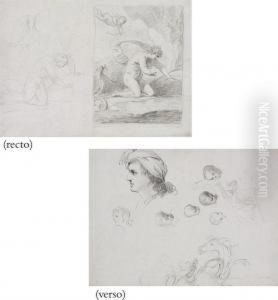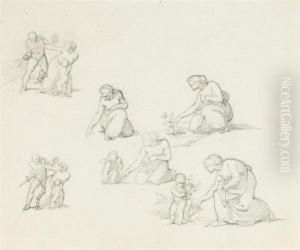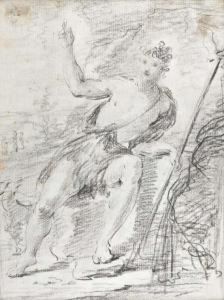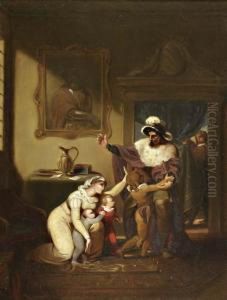Francisco Viera Portuense Paintings
Francisco Vieira, commonly known as Francisco Vieira Portuense, was a prominent Portuguese painter born on May 13, 1765, in Porto, Portugal. His full name was Francisco Vieira de Matos, but he was better known by his nickname, which incorporated the name of his native city.
Vieira Portuense showed an early affinity for the arts and began his formal training at the age of eleven when he enrolled in the Aula de Náutica (Nautical Class) in Porto. Although this institution was primarily focused on subjects such as geography and navigation, it offered Vieira the opportunity to study drawing under the guidance of Italian artist Domenico Vandelli. Recognizing his talent, local patrons sponsored his further education.
In 1780, he moved to Lisbon to pursue his artistic studies at the Royal Academy of Fine Arts. His talent was quickly noticed, and he won a scholarship to study in Rome, which was then the heart of the Neoclassical art movement. Vieira Portuense spent nearly a decade in Italy, absorbing the works of classical antiquity and the Renaissance, as well as the contemporary Neoclassical ideas espoused by artists like Jacques-Louis David.
During his time in Rome, Vieira Portuense also spent a period in Naples, where he was influenced by the vibrant art scene and the presence of other important artists. He developed a style characterized by clear and harmonious composition, with a particular talent for depicting the human figure and employing a refined use of light and shadow. His works often contained mythological or historical subjects, rendered with a sense of drama and emotion that was typical of the Neoclassical style.
Vieira Portuense returned to Portugal in 1795, where he was appointed a professor at the Royal Academy of Fine Arts in Lisbon. He became a key figure in the introduction and dissemination of the Neoclassical style in Portuguese art. Among his notable works are 'The Sacrifice of Polyxena' and 'Death of Camões,' which reflect his mastery of historical and literary themes.
Unfortunately, Vieira Portuense's life was cut short by tuberculosis, and he passed away on June 2, 1805, in Lisbon at the age of 40. Despite his relatively brief career, his influence on Portuguese art was significant, and he is remembered as one of the leading figures of the Neoclassical movement in Portugal. His works can be found in various Portuguese institutions, such as the National Museum of Ancient Art in Lisbon and the Soares dos Reis National Museum in Porto.




